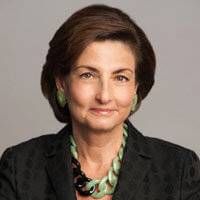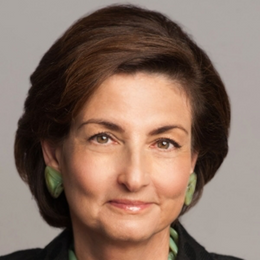How We Can Use Our Longer Lives to Do Good
The experience and expertise of older people can make the world a better place
(This article is the ninth in a weekly Next Avenue series, The Future of Aging: Realizing the Potential of Longevity published by the Milken Institute Center for the Future of Aging. It was originally titled Three New Decades to Do Good. The first article in the series was A New Model for the Future of Aging. The second was Personalized Aging: Extending Lifespans and Healthspans. The third was Boomers: Less Tied to Friends and Family Than Others Are. The fourth was What It Will Take for the U.S. to Profit From the Longevity Dividend. The fifth was Work, Retirement and Financial Security in the 21st Century. The sixth was Technology, Aging and the Coming Fifth Wave. The seventh was 5 Course Corrections Needed for a Better Future of Aging. The eighth was Let’s Make the Most of the Intergenerational Opportunity.)

Between 1900 and 2000, the average life expectancy in the United States increased nearly 30 years. That’s one of the most remarkable public health achievements in history, and it creates an extraordinary opportunity — not just to enjoy the extra time but because of what it can mean for Americans of all ages.
Those additional 30 years, if they are lived in good health, offer the prospect that all of us can benefit from the huge capabilities that having more older Americans will bring. Their participation promises to have lasting impact on many of the challenges our nation faces.
Children are not graduating from high school, much less college, in adequate numbers for the nation to achieve needed high employment rates and productivity. Our workers are not prepared for the jobs that are available. The health of our children and the working-age population has fallen well behind our peer nations. And the threats to our environment are increasing.
Using Longer Lives to Contribute
Fortunately, we can take advantage of our longer life expectancy to engage older Americans in contributing their experience and skills to implementing solutions. Nearly 20 percent of America’s population is 60 years old or older, and soon 20 percent will be 65 or older. We will then have as many older people as children.
And we can ask ourselves: Would our kids be doing better if there was a caring older person in every child’s life for the long haul?
We need the assets of our many older people to make our nation stronger: their experience and expertise, their ability to analyze problems and help fix them, their continued desire to leave the world a better place and their time.
Those assets could not only improve society, but — if their roles are well-designed — make older Americans healthier as they share them.
One major task necessary to age successfully is feeling that our lives are meaningful, that we have created something that will endure beyond us. At every age, we need a reason to get up in the morning and some structure in our lives. Without it, we get sick and risk dying earlier.
We also know that what prevents people from being able to engage in the things that matter is their health. People who reach age 70 healthy are positioned to stay healthier; people who reach 70 sick will likely get sicker. Investment in promoting health at every age and into the oldest ages will make a big difference in the health we experience.
Designing Roles to Promote Health
What then if we created new roles and opportunities for older people that offer a wide range of options that enable them to leave their families, communities and nation better than they found them? What if we designed those roles to also promote health?
If we created enough roles, older people could find ways to make a difference that matched their interests — roles that could collectively have a huge impact.
We know from programs like AARP Experience Corps that this can work. Experience Corps is an evidence-based, scientifically designed volunteer program for older adults that tackles one major need: children’s success in public elementary schools. It has created new volunteer roles in schools, designed them for engagement with each child and placed enough older volunteers to benefit all the children in a grade. It is also a public health program for the older volunteers, designed to enhance health and prevent memory loss, frailty, falls and disability — the scourges of old age. It works for all.
From evaluations of Experience Corps and other work and volunteer roles for older people, we can identify the critical societal needs that older adults could solve and build new, effective and satisfying roles.
At the same time, we must attend to the health of our population, so that people arrive at age 70 healthy and stay healthy longer. Unfortunately, the United States vastly underinvests in public health — both in creating the conditions for health and funding research to better preserve health and prevent disease.
Seventy percent of our health comes from elements of public health, from safe water and clean air to access to affordable and healthy food and having the right health system, among other things. Yet the United States invests only 3 percent of its health dollars in public health.
With this proposed approach, those extra 30 years can be transformational. And the future of aging can benefit the future of youth, as well as the rest of us.
How to Maximize the Future of Aging
Here are three big ideas to maximize the future of aging:
1. Build roles that match unmet social needs and support the impactful contributions of older adults
2. Invest in promoting health at every age and stage through strengthened public health research, policy, systems and practices
3. Issue a call to arms to older Americans to enable the future of aging to improve the future of youth


